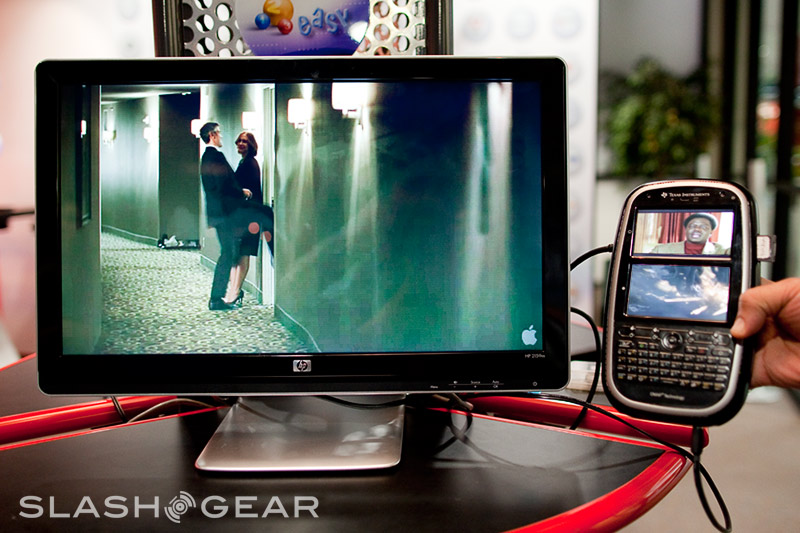The Nintendo 3DS has now been announced by Nintendo in this official press release:
March 23, 2010
To Whom It May Concern:
Re: Launch of New Portable Game Machine
Nintendo Co., Ltd.(Minami-ward of Kyoto-city, President Satoru Iwata) will launch “Nintendo 3DS”(temp) during the fiscal year ending March 2011, on which games can be enjoyed with 3D effects without the need for any special glasses.
“Nintendo 3DS”(temp) is going to be the new portable game machine to succeed “Nintendo DS series”, whose cumulative consolidated sales from Nintendo amounted to 125 million units as of the end of December 2009, and will include backward compatibility so that the software for Nintendo DS series, including the ones for Nintendo DSi, can also be enjoyed.
We are planning to announce additional details at E3 show, which is scheduled to be held from June 15, 2010 at Los Angeles in the U.S.
I’m a big fan of Nintendo, while I would be very impressed if this 3D screen technology (rumored to be Sharp/Hitachi’s parallax barrier) actually doesn’t look like some blurry crap, which is my opinion of all the 3D screens that I have seen at consumer electronic shows so far these past few years, with and without glasses. Here are my feature wish-list for Nintendo’s next portable game console:
– It should be possible to deactivate the 3D screen effect and the screen must be just as clear as the market’s best LCD screens
– Game downloads, Nintendo needs to be bold and provide $1 Game downloads, for all games, including affordable $15/month game subscription plans that gives access to all the games. Online games means they get updated often and new games could even be streamed when they are based on pre-installed game engines.
– 3G module for extra $50, there should be a module slot in the back of the device where users should be able to add such things as a modem for 3G and its SIM card. The 3G module shoulds be unlocked so anny SIM card on any carrier can be used.
– Android OS, Nintendo surely has enough money and power to do their own OS if they want. I would find it much more interesting if Nintendo was so courageous and simply base their next portable on Android. At the same time announce that games will work on other Android phones that have graphics hardware acceleration. This would instantly add thousands of apps to the platform and make all UI and feature design work compatible with the rest of the industry.
– SD card slot but perhaps even a built-in hard drive compartment. Adding a 1.8″ or 2.5″ hard drive in the back of the device could be really cool to thus have enough storage for hundreds of big games, videos and music.
– HDMI output, this should basically be even more powerful than the Wii in terms of graphics outputting full 720p and 1080p games to HDTVs.
– At least dual 4″ screens, perhaps a larger version with dual 4.8″ screens. The screens should be close enough to each other so when the device is opened or put on a table, it would look like one big screen.
– Keyboard add-on should cover one screen and thus turn the device into a pocketable laptop form factor. The keyboard should be foldable, thus providing a full sized keyboard typing speed.
– Nintendo should do the marketing for using it for VOIP and IM, it should be compatible with SIP, Skype, Google Voice, video-conferencing and more. Over WiFi and 3G and even other networks as the modem module shall be replacable with other networking technologies. Thus Nintendo should market this as a replacement for smartphones.
– Full video codecs playback at up to 1080p and full bitrates also for high profile. Somehow video playback battery runtime should be at least 10 hours. Youtube HD support should be included.
– Pixel Qi screens so the Nintendo portable can be used for reading, with 50 or more hours of battery runtime. Comon Nintendo, when you order 100 million screens, you can make any screen technology you want. Be the first to announce 4.8″ Pixel Qi LCD screens. Including even that 3D layer on top if you want.
– Usable for education. Instead of teachers and schools banning the Nintendo DS from the classrooms (I’ve seen this happen for some of my young cousins), Nintendo should work to include the hardware in class rooms. Thus it needs educational contents, it needs to provide productivity such as the web browsing and text input needs to provide a full speed experience.
– Pricing should be below $200, preferably $150 without the 3G module.
What do you think?





![Reblog this post [with Zemanta]](http://img.zemanta.com/reblog_e.png?x-id=244a4c74-a055-4f4a-b597-5dd15c6e02ac)


![Reblog this post [with Zemanta]](http://img.zemanta.com/reblog_e.png?x-id=2579ff6d-8cf6-488f-a763-ebc0019787eb)

![Reblog this post [with Zemanta]](http://img.zemanta.com/reblog_e.png?x-id=1e1d064f-c980-4e5b-921f-46825be2253d)

![Reblog this post [with Zemanta]](http://img.zemanta.com/reblog_e.png?x-id=48dd1cf7-e8c4-4e7e-a20c-e28245337a93)


![Reblog this post [with Zemanta]](http://img.zemanta.com/reblog_e.png?x-id=d903f725-5579-49a4-aeaf-8185b136a3ed)
![Reblog this post [with Zemanta]](http://img.zemanta.com/reblog_e.png?x-id=163d2d2d-5728-402a-b8e6-b28c2948c484)
![Reblog this post [with Zemanta]](http://img.zemanta.com/reblog_e.png?x-id=1df108b9-68fc-46e4-b311-a704f84e60cb)

![Reblog this post [with Zemanta]](http://img.zemanta.com/reblog_e.png?x-id=8a541fba-3c0f-4d24-a624-ba917dbf91c0)

![Reblog this post [with Zemanta]](http://img.zemanta.com/reblog_e.png?x-id=b204a271-e736-47f8-99ec-a281cc5383a5)

![Reblog this post [with Zemanta]](http://img.zemanta.com/reblog_e.png?x-id=eeeca0e8-104d-44e9-8d2b-c6283d31c4eb)

![Reblog this post [with Zemanta]](http://img.zemanta.com/reblog_e.png?x-id=8a87f7be-0770-48e0-bbcc-cd5b2f04cab9)

![Reblog this post [with Zemanta]](http://img.zemanta.com/reblog_e.png?x-id=38ce39c8-c4a3-4b69-ba1a-e1fab4203bf0)



